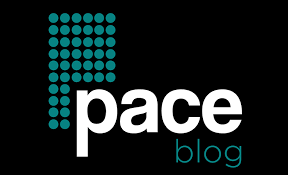If you have ever been in the market for buying health insurance plans, you must have surely come across terms such as claim settlement and cashless hospitalisation. These concepts not only impact the financial aspects of medical treatment but also significantly influence patient experience and overall satisfaction. This guide delves into the essentials of claim settlement and cashless treatment, offering a comprehensive overview to help you navigate the healthcare system more efficiently.
Understanding Claim Settlement
It is the process through which an insurance company pays out the benefits of an insurance policy to the policyholder or a nominated beneficiary. This procedure ensures that you or any of your insured family members receive financial reimbursement for medical expenses incurred.
Types of Claims
| Cashless Claims | Reimbursement Claims |
| Under this system, the insurance company directly settles the hospital bills with the healthcare provider. This eliminates the need for you to pay upfront. Cashless settlement is typically available at network hospitals, which have agreements with the insurance provider. | In this scenario, you are required to pay for the medical expenses out of pocket and subsequently file a claim for reimbursement. The insurance company then reviews the claim and reimburses the policyholder for the eligible expenses. |
Steps in the Claim Process
Most insurers prescribe a claim process that is unique to them. However, most processes involve the following basic steps:
- Notification: Inform the insurance company about the hospitalisation or medical procedure as soon as possible. For planned treatments, notify them well in advance; for emergencies, within the stipulated time frame.
- Documentation: Submit the required documents, which typically include the claim form, hospital bills, discharge summary, and any other relevant medical reports.
- Review and Approval: The insurance company reviews the submitted documents to verify the authenticity of the claim. This step may involve a Third-party Administrator (TPA) who assists in the claims process.
- Disbursement: Upon approval, the insurance company disburses the claim amount. In cashless claims, the payment is made directly to the hospital, while in reimbursement claims, the amount is credited to your account.
While following the above steps, you should be mindful of certain common errors and take the required steps to avoid them. For instance, you ensure that all required documents are submitted in the correct format to prevent delays or rejections. You should also be aware of the exclusions and limitations of your policy to set realistic expectations for claim approval.
Cashless Hospitalisation: An Overview
Cashless treatment is a facility offered by healthcare insurance companies where the insurer directly settles the medical bills with the hospital. This facility is available only at network hospitals that have tie-ups with the insurance provider.
The cashless arrangement offers the following benefits:
- Financial Relief: It eliminates the need for immediate cash outflow, providing significant financial relief during medical emergencies.
- Convenience: The process is streamlined and hassle-free, reducing the administrative burden on the patient and their family.
- Timely Treatment: Patients can access necessary medical treatment promptly without worrying about arranging funds.
How to Avail Cashless Treatment
First of all, you should ensure that the hospital where you seek treatment is part of the insurer’s network. You can find the list of network hospitals on your insurance company’s website. For instance, you can head over to Niva Bupa’s website to find details of their 10,000+ network hospitals. Once you are clear about the hospital, you can proceed ahead.
- Pre-authorisation: For planned treatments, obtain pre-authorisation from the insurance company. This involves submitting a pre-authorisation form to the TPA or insurance company, detailing the medical procedure and estimated costs.
- Emergency Admission: In emergencies, inform the hospital about your insurance details upon admission. The hospital’s insurance desk will facilitate the pre-authorisation process with the insurer.
- Approval and Treatment: Once the insurer approves the pre-authorisation request, the treatment proceeds. The insurer directly settles the eligible expenses with the hospital.
- Discharge and Settlement: After discharge, the hospital submits the final bill to the insurer. Any non-covered expenses must be settled by the patient.
Choosing the Right Insurance Plan

Selecting the right health plan is fundamental to ensuring a smooth claim process and cashless hospitalisation. Consider the following factors:
- Network Hospitals: Opt for an insurer like Niva Bupa with an extensive network of hospitals, especially those located near your residence.
- Coverage and Benefits: Assess the policy’s coverage, including hospital room rent limits, pre and post-hospitalisation expenses, daycare procedures, and critical illness coverage.
- Claim Settlement Ratio: Research the insurer’s claim ratio, which indicates the percentage of claims settled versus received. A higher ratio above 90% signifies better reliability.
- Customer Reviews and Feedback: Look into customer reviews and feedback regarding the insurer’s claim process and customer service.
- Premiums and Affordability: Balance the premium costs with the coverage benefits. Opt for a plan that offers comprehensive coverage without straining your finances.
To Sum Up

Efficient healthcare management hinges on understanding the details of claim settlement and cashless hospitalisation. By familiarising yourself with these processes, you can ensure timely medical treatment without the added stress of financial uncertainty. Choose the right plan, stay informed about your policy’s terms, and maintain meticulous documentation to navigate the healthcare system with confidence and ease.

